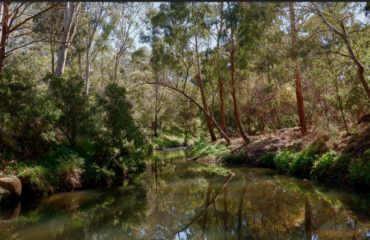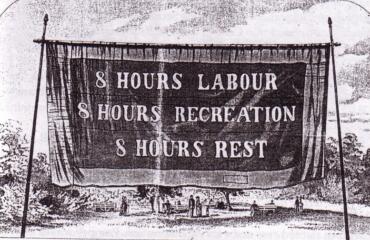After three successive years of wet La Niña weather patterns, landscapes and waterways around Greater Bendigo are thriving, with surveys of tree cover and vegetation growth recording their highest levels since 2000.

Brimming with life: Greater Bendigo’s Kennington Reservoir Photo: Shutterstock
The Greater Bendigo area scored 9.7 out of 10 in the latest Australia National University Environment Report, well up from a 6.7 score in 2021. Then there’s the bad news. With the Bureau of Meteorology saying a swing into a hot, dry El Nino pattern this summer is now 70 per cent likely, all that growth is fuelling anxieties in fire-prone regions.
“I would not be the least bit surprised to see several catastrophic fire days this summer,” says Professor of Pyrogeography and Fire Science David Bowman of the University of Tasmania, a leading expert on fire risk and behaviour.

A Victorian CFA firefighter giving water to a koala during a back-burning operation in the aftermath of the 2009 Black Saturday bushfires Image: YouTube
Tough choices will need to be made by authorities and communities across Australia this summer, Bowman says.
“I would be thinking seriously about evacuations.”
“I would be thinking seriously about fuel management, I would be thinking seriously about funding an enormous program to get Australian communities fire-wise.”
Although memories of last October’s floods are still fresh, Bendigo residents need to now be preparing their properties for fire risk, says the Country Fire Authority’s Bendigo district country officer, Steve Alcock. “It’s always tough,” Alcock acknowledges. “We transitioned out of the flood season into a fire season fairly quickly.”
This July, global temperatures, driven up by the burning of fossil fuels, have shattered previous records, fuelling heatwaves and wildfires in the northern hemisphere, according to the World Meteorological Organisation. Such high temperatures coming off the back of a triple La Niña was unprecedented, Professor Bowman said.

Stumped: the transition between severe wet and dry seasons can compound fire risk. Photo: Gwen Liu
The City of Greater Bendigo’s council’s fire prevention officer, Darren Masters, says the transition between severe wet and dry seasons can compound fire risk. “Grounds are saturated. It is great conditions for growing anything at all so we expect to see fast rapid growth and drying of vegetation.”
The CFA has maintained a program of controlled burns through the colder months to reduce fuel loads ahead of summer. But there are only so many controlled burns that can be done in time, says Darren Masters.
“I feel like there’s still a lot to be done and you can never do enough.”
New research by the CSIRO shows that human-caused greenhouse gas emission will likely mean that El Niño and La Niña events occur more often. Increased global temperatures will then add to the potential fire risks of these events.
Most models drawn on by the CSRIO are predicting a 1.5-2.5 degree increase of surface temperatures across the Murray Basin region – which includes Bendigo – by 2050. (See Sunburnt country 2050 below.)
Greater Bendigo Mayor, Cr Andrea Metcalf says the community needs to prepare.
“I think everyone will be on high alert as to what that might bring for the summer season and for fire.”
Sunburnt country 2050: more drought, fewer flooding rains
As regions across Australia brace for a hotter, drier future, research from CSIRO and the BoM predict what the climate will look like for Bendigo in 2050.





